Tanvi Gupta
Scalable End-to-End ML Platforms: from AutoML to Self-serve
Mar 04, 2023


Abstract:ML platforms help enable intelligent data-driven applications and maintain them with limited engineering effort. Upon sufficiently broad adoption, such platforms reach economies of scale that bring greater component reuse while improving efficiency of system development and maintenance. For an end-to-end ML platform with broad adoption, scaling relies on pervasive ML automation and system integration to reach the quality we term self-serve that we define with ten requirements and six optional capabilities. With this in mind, we identify long-term goals for platform development, discuss related tradeoffs and future work. Our reasoning is illustrated on two commercially-deployed end-to-end ML platforms that host hundreds of real-time use cases -- one general-purpose and one specialized.
Looper: An end-to-end ML platform for product decisions
Nov 10, 2021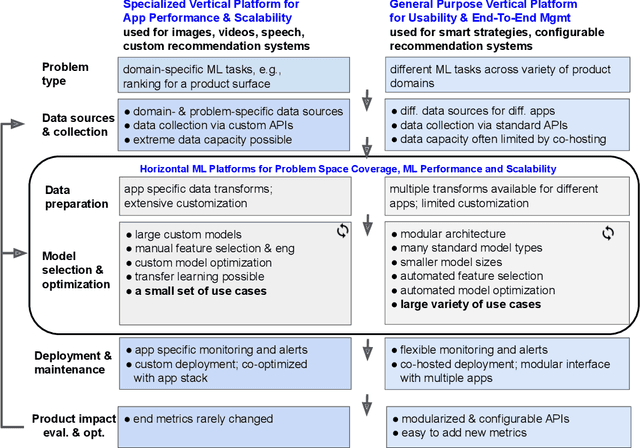
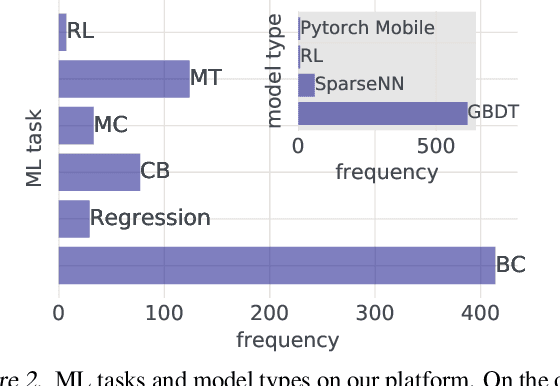
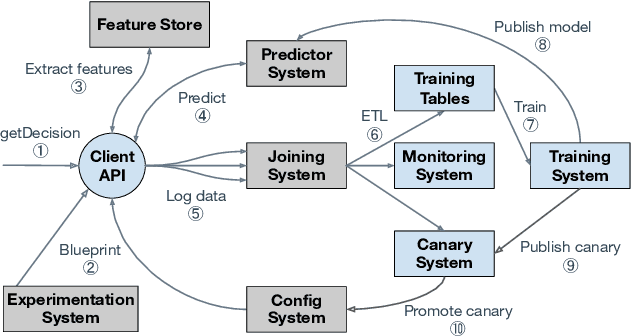
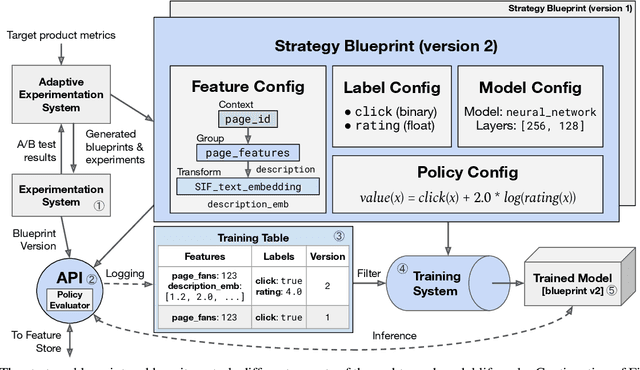
Abstract:Modern software systems and products increasingly rely on machine learning models to make data-driven decisions based on interactions with users and systems, e.g., compute infrastructure. For broader adoption, this practice must (i) accommodate software engineers without ML backgrounds, and (ii) provide mechanisms to optimize for product goals. In this work, we describe general principles and a specific end-to-end ML platform, Looper, which offers easy-to-use APIs for decision-making and feedback collection. Looper supports the full end-to-end ML lifecycle from online data collection to model training, deployment, inference, and extends support to evaluation and tuning against product goals. We outline the platform architecture and overall impact of production deployment -- Looper currently hosts 700 ML models and makes 6 million decisions per second. We also describe the learning curve and summarize experiences of platform adopters.
Tumor Classification and Segmentation of MR Brain Images
Oct 31, 2017


Abstract:The diagnosis and segmentation of tumors using any medical diagnostic tool can be challenging due to the varying nature of this pathology. Magnetic Reso- nance Imaging (MRI) is an established diagnostic tool for various diseases and disorders and plays a major role in clinical neuro-diagnosis. Supplementing this technique with automated classification and segmentation tools is gaining importance, to reduce errors and time needed to make a conclusive diagnosis. In this paper a simple three-step algorithm is proposed; (1) identification of patients that present with tumors, (2) automatic selection of abnormal slices of the patients, and (3) segmentation and detection of the tumor. Features were extracted by using discrete wavelet transform on the normalized images and classified by support vector machine (for step (1)) and random forest (for step (2)). The 400 subjects were divided in a 3:1 ratio between training and test with no overlap. This study is novel in terms of use of data, as it employed the entire T2 weighted slices as a single image for classification and a unique combination of contralateral approach with patch thresholding for segmentation, which does not require a training set or a template as is used by most segmentation studies. Using the proposed method, the tumors were segmented accurately with a classification accuracy of 95% with 100% specificity and 90% sensitivity.
Automated Tumor Segmentation and Brain Mapping for the Tumor Area
Oct 28, 2017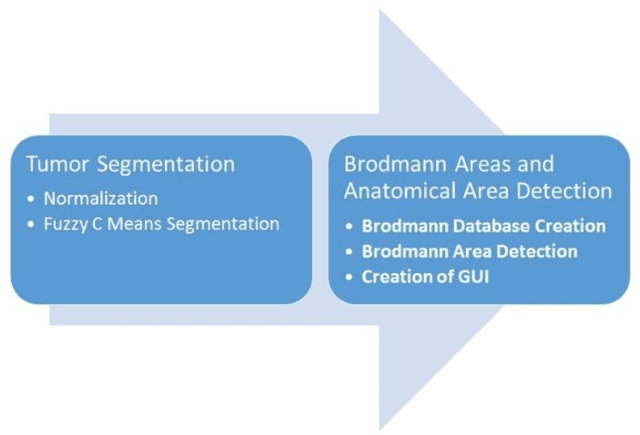
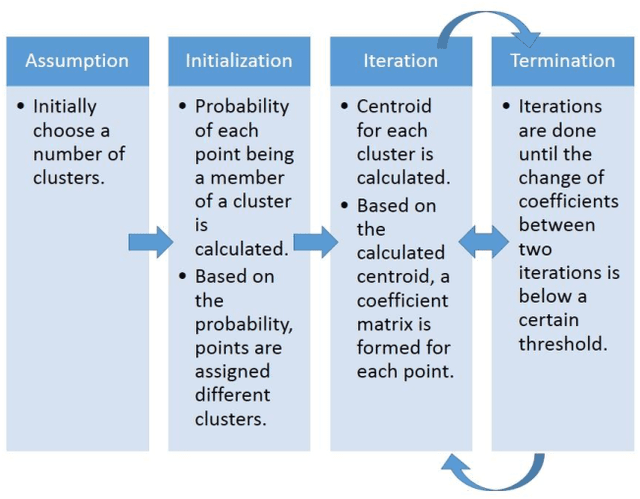
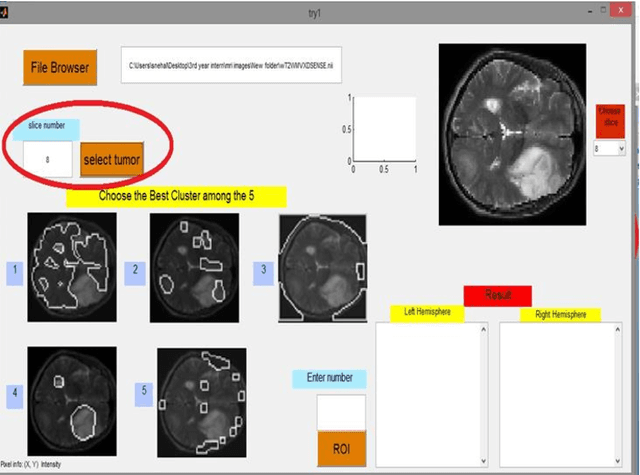

Abstract:Magnetic Resonance Imaging (MRI) is an important diagnostic tool for precise detection of various pathologies. Magnetic Resonance (MR) is more preferred than Computed Tomography (CT) due to the high resolution in MR images which help in better detection of neurological conditions. Graphical user interface (GUI) aided disease detection has become increasingly useful due to the increasing workload of doctors. In this proposed work, a novel two steps GUI technique for brain tumor segmentation as well as Brodmann area detec-tion of the segmented tumor is proposed. A data set of T2 weighted images of 15 patients is used for validating the proposed method. The patient data incor-porates variations in ethnicities, gender (male and female) and age (25-50), thus enhancing the authenticity of the proposed method. The tumors were segmented using Fuzzy C Means Clustering and Brodmann area detection was done using a known template, mapping each area to the segmented tumor image. The proposed method was found to be fairly accurate and robust in detecting tumor.
 Add to Chrome
Add to Chrome Add to Firefox
Add to Firefox Add to Edge
Add to Edge